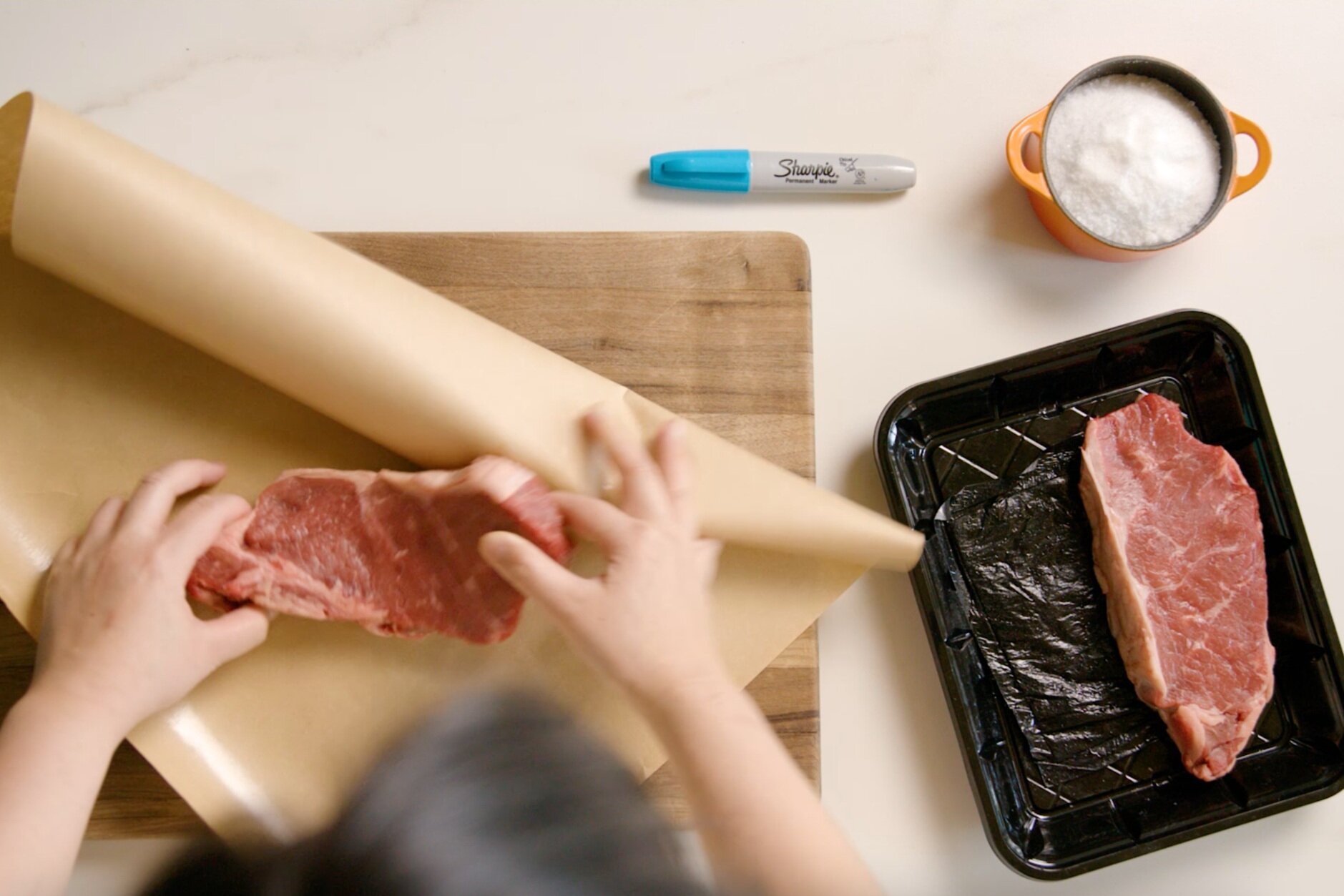

Articles
How To Store Meat In Freezer Without Plastic
Modified: August 24, 2024
Learn how to store meat in your freezer without using plastic containers. Read articles and tips on sustainable food storage methods to keep your meat fresh and reduce waste.
(Many of the links in this article redirect to a specific reviewed product. Your purchase of these products through affiliate links helps to generate commission for Storables.com, at no extra cost. Learn more)
Introduction
When it comes to storing meat in the freezer, many people default to using plastic containers or bags. However, there are concerns about potential health and environmental risks associated with using plastic for food storage. Plastic containers can leach harmful chemicals into the food, especially when exposed to high temperatures. Additionally, plastic takes a long time to decompose and contributes to environmental pollution.
Fortunately, there are alternative ways to store meat in the freezer without relying on plastic. These methods not only eliminate the potential health risks but also help reduce waste and promote sustainability. In this article, we will explore various options for storing meat in the freezer without plastic, so you can make informed choices that are both healthy and environmentally-friendly.
Key Takeaways:
- Say goodbye to plastic and hello to sustainable meat storage! From glass containers to beeswax wraps, there are plenty of eco-friendly options to keep your meat fresh in the freezer without compromising your health or the environment.
- Ditch the plastic and embrace alternative meat storage methods. Whether it’s vacuum seal bags or stainless steel containers, you can safeguard your health and contribute to a more sustainable lifestyle while keeping your frozen meats in top condition.
Read more: How To Store Bread Without Plastic
Why Avoid Plastic for Storing Meat?
Plastic is a convenient and widely-used material for food storage, but it has its drawbacks, especially when it comes to storing meat in the freezer. Here are a few reasons why you should consider avoiding plastic for meat storage:
- Potential Health Risks: Plastic containers and bags may contain harmful chemicals, such as bisphenol-A (BPA) and phthalates, which can leach into the food, especially when exposed to heat. These chemicals have been linked to various health issues, including hormonal imbalance and reproductive disorders. By avoiding plastic, you can minimize the risk of these harmful substances contaminating your meat.
- Environmental Impact: Plastic is not biodegradable and takes hundreds of years to decompose. Improper disposal of plastic contributes to pollution, particularly in our oceans. By reducing our reliance on plastic for meat storage, we can help minimize plastic waste and its detrimental impact on the environment.
- Possible Freezer Burn: Plastic bags and containers may not provide adequate protection against freezer burn, which occurs when air comes into contact with frozen food. Freezer burn can affect the quality and taste of the meat, leading to a disappointing culinary experience. By using alternative storage methods, you can better preserve the freshness and flavor of your meat.
- Transfer of Odors and Flavors: Plastic containers can absorb and retain odors and flavors from the stored meat, even after thorough cleaning. This can result in cross-contamination and alter the taste of other foods stored in the same container. By opting for other storage options, you can maintain the integrity and individual flavors of your different meats.
By choosing alternative methods to store meat in the freezer, you can not only safeguard your health but also contribute to a more sustainable and eco-friendly lifestyle. Let’s explore some effective alternatives for plastic meat storage that will help you maintain the quality, taste, and safety of your frozen meats.
Alternative Ways to Store Meat in the Freezer
If you want to avoid using plastic for storing meat in the freezer, there are several effective alternatives to consider. These options provide a safe and eco-friendly way to preserve the quality and freshness of your meat. Let’s explore some of the most popular alternatives:
- Use Glass Containers: Glass containers are an excellent plastic-free option for storing meat in the freezer. Look for containers that are specifically designed for freezer use, with airtight lids to prevent freezer burn. Glass containers are safe, durable, and do not absorb odors or flavors.
- Wrap in Butcher Paper: Butcher paper, also known as freezer paper, is a specially designed paper that has a protective plastic coating on one side. It provides an effective barrier against freezer burn and allows the meat to breathe. Wrap your meat tightly in butcher paper, label it, and secure it with tape or butcher twine.
- Utilize Silicone Food Storage Bags: Silicone food storage bags are a reusable and eco-friendly alternative to plastic bags. Look for options that are freezer-safe and airtight. These bags are easy to clean and can be used repeatedly, reducing your dependence on single-use plastic.
- Try Beeswax Wraps: Beeswax wraps are a natural and sustainable alternative to plastic wrap. Made from cotton fabric coated with beeswax, these wraps can be molded to cover and seal your meat in the freezer. They are reusable, biodegradable, and do not transfer any unwanted odors or flavors.
- Vacuum Seal Bags: Vacuum sealing removes all the air from the packaging, preventing freezer burn and prolonging the freshness of the meat. Invest in a vacuum sealer and vacuum seal bags to tightly seal your meat for freezer storage.
- Freeze in Aluminum Foil: Aluminum foil can be used to wrap individual portions of meat, providing a protective layer against freezer burn. Ensure that the meat is tightly wrapped to prevent air exposure. Label the foil with the type and date for easy identification in the freezer.
- Store in Stainless Steel Containers: Stainless steel containers are another plastic-free option for freezing meat. They are durable, easy to clean, and do not react with food. Look for containers with secure lids to keep your meat well-preserved.
These alternative methods offer safe and sustainable solutions for storing meat in the freezer without relying on plastic. Choose the option that works best for your needs and preferences, and enjoy the benefits of a healthier, environmentally-friendly approach to meat storage.
Use Glass Containers
Glass containers are a fantastic alternative to plastic for storing meat in the freezer. They provide a safe and eco-friendly option that eliminates the risk of harmful chemicals leaching into your food. Here’s how you can effectively use glass containers for meat storage:
Choose Freezer-Safe Glass Containers: Look for glass containers specifically designed for freezer use. These containers are made from thick, durable glass that can withstand extreme temperatures without cracking. Make sure they have airtight lids to prevent air and moisture from entering the container, which can cause freezer burn.
Prep and Pack Your Meat Properly: Before placing the meat in the container, cut it into suitable portions or sizes. This will make it easier to thaw and use the meat as needed. Ensure the meat is completely cooled down before transferring it to the glass container. If you’re storing raw meat, consider adding a layer of parchment paper or plastic wrap between each piece to prevent them from sticking together.
Fill and Seal the Containers: Place the prepared meat pieces into the glass container, leaving some space at the top for expansion during freezing. Avoid overpacking the container, as this can lead to squished or damaged meat. Once the container is filled, seal it tightly with an airtight lid. Make sure there are no gaps or openings that could allow air to enter.
Label and Date: Before storing the container in the freezer, label it with the type of meat and the date of freezing. This will help you easily identify and keep track of your frozen meats, ensuring they are used within a reasonable timeframe.
Thawing: When it’s time to use the meat, transfer the glass container to the refrigerator to thaw slowly. Glass containers are safe for transitioning from the freezer to the fridge, providing a seamless thawing process. Avoid thawing the meat at room temperature, as it can promote bacterial growth.
Glass containers offer numerous benefits for storing meat in the freezer. They are non-toxic, dishwasher-safe, and do not absorb odors or flavors from the food. Plus, they can be reused repeatedly, reducing waste and promoting environmental sustainability.
By using glass containers for meat storage, you can ensure the quality, safety, and freshness of your frozen meats without compromising your health or the environment.
Wrap in Butcher Paper
Butcher paper, also known as freezer paper, is an excellent alternative to plastic for wrapping and storing meat in the freezer. It provides a protective barrier against freezer burn while allowing the meat to breathe. Here’s how you can effectively use butcher paper for meat storage:
Choose High-Quality Butcher Paper: Look for freezer-grade butcher paper that has a plastic coating on one side. This coating helps to create a barrier against air and moisture, preserving the quality of the meat. Ensure the butcher paper is sturdy and tear-resistant, so it can withstand the freezing process.
Prep and Wrap the Meat: Before wrapping the meat, ensure it is properly cooled down. Place the meat on a clean, flat surface and trim any excess fat or connective tissue. Cut the butcher paper to the appropriate size, allowing enough to fully wrap the meat. Place the meat in the center of the paper and fold the sides over, tucking in the edges to create a tight seal.
Secure and Label: Use tape or butcher’s twine to secure the butcher paper around the meat, ensuring it is tightly sealed to prevent air exposure. Use a permanent marker to label the package with the type of meat and the date of freezing. This will help you easily identify and rotate your frozen meats.
Store in an Airtight Bag or Container: While butcher paper provides a protective layer against freezer burn, it can still benefit from being stored in an airtight bag or container. Place the wrapped meat in a freezer-safe bag or container, ensuring it is sealed tightly. This additional layer of protection will help maintain the quality and prevent any potential cross-contamination with other foods in the freezer.
Thawing: When you’re ready to use the meat, remove it from the freezer and let it thaw in the refrigerator. Butcher paper allows the meat to thaw gradually, preventing any moisture loss or damage during the thawing process. Avoid thawing the meat at room temperature, as this can promote bacterial growth.
Butcher paper is an economical and environmentally-friendly option for storing meat in the freezer. It is readily available, easy to use, and can be recycled after use. By using butcher paper, you can protect the quality and flavor of your frozen meat while minimizing waste and reducing your reliance on plastic.
Read more: How To Store Food Without Plastic
Utilize Silicone Food Storage Bags
Silicone food storage bags are an innovative and sustainable alternative to plastic bags for storing meat in the freezer. Made from food-grade silicone, these bags provide a safe and reusable option that reduces waste. Here’s how you can effectively use silicone food storage bags for meat storage:
Choose Freezer-Safe Silicone Bags: Look for silicone food storage bags that are specifically designed for freezer use. Ensure they are made from food-grade silicone and are free from harmful chemicals. Select bags that have a strong seal or closure mechanism to prevent any air or moisture from entering.
Prep and Pack Your Meat: Cut the meat into suitable portions or sizes before placing it in the silicone bag. This will make it easier to thaw and use the meat as needed. Ensure that the meat is completely cooled down before transferring it to the bag. If you’re storing raw meat, it’s a good idea to place the bag in a bowl or tray to catch any potential drips or leaks.
Seal the Bag Securely: Once the meat is in the bag, press out any excess air and seal it tightly. Silicone bags often have a slider or pinch-lock seal that provides a secure closure. Ensure that the bag is properly sealed to prevent any air or moisture from entering and causing freezer burn or contamination.
Label and Date: Use a permanent marker to label the bag with the type of meat and the date of freezing. This will help you easily identify and rotate your frozen meats, ensuring they are used within a reasonable timeframe.
Store in the Freezer: Place the sealed silicone bag in the freezer, making sure it is stored flat to maximize space and prevent any leakage. If you’re stacking multiple bags, allow them to freeze individually before stacking them on top of one another to prevent sticking.
Thawing: When you’re ready to use the meat, remove the silicone bag from the freezer and let it thaw in the refrigerator. Silicone bags are safe for transitioning from the freezer to the fridge, allowing for a seamless thawing process. Avoid thawing the meat at room temperature, as this can promote bacterial growth.
Silicone food storage bags are a versatile and eco-friendly option for storing meat in the freezer. They are easy to clean, dishwasher-safe, and can be reused countless times, reducing your reliance on single-use plastics. By utilizing silicone food storage bags, you can effectively store your meat while minimizing waste and promoting sustainability.
Use airtight containers or freezer bags to store meat in the freezer without plastic. Wrap the meat in parchment paper before placing it in the container to prevent freezer burn.
Try Beeswax Wraps
Beeswax wraps are a natural and sustainable alternative to plastic wrap when it comes to storing meat in the freezer. Made from cotton fabric coated with beeswax, these wraps provide a breathable and protective barrier for your meat. Here’s how you can effectively use beeswax wraps for meat storage:
Choose High-Quality Beeswax Wraps: Look for beeswax wraps that are specifically designed for freezer use. Ensure they are made from organic cotton and coated with a good amount of beeswax to provide a sturdy and durable wrap. Opt for wraps that come in different sizes to accommodate various cuts of meat.
Prep and Wrap Your Meat: Ensure that the meat is properly cooled down before wrapping it in a beeswax wrap. Place the meat in the center of the wrap and fold the sides over to cover it completely. Use the warmth of your hands to mold and seal the wrap around the meat, creating a tight and secure package.
Label and Date: Use a permanent marker to label the beeswax wrap with the type of meat and the date of freezing. This will help you easily identify and rotate your frozen meats, ensuring they are used within a reasonable timeframe.
Store in an Airtight Bag or Container: While beeswax wraps offer a protective layer against freezer burn, it can be beneficial to store them in an airtight bag or container for extra protection. This will prevent any potential cross-contamination with other foods in the freezer and help maintain the quality of the meat.
Thawing: When you want to use the meat, remove the beeswax wrap from the freezer and let it thaw in the refrigerator. Beeswax wraps allow for gradual thawing, preserving the moisture and flavor of the meat. Avoid thawing the meat at room temperature to prevent bacterial growth.
Beeswax wraps are an eco-friendly option for storing meat in the freezer. They are reusable, biodegradable, and do not transfer any unwanted odors or flavors to the food. Beeswax wraps can be refreshed by rewaxing them when needed, extending their lifespan. By incorporating beeswax wraps into your meat storage routine, you can eliminate the need for single-use plastics and promote a more sustainable lifestyle.
Vacuum Seal Bags
Vacuum seal bags are an effective and efficient way to store meat in the freezer without the need for plastic. The vacuum sealing process removes all the air from the bag, helping to prevent freezer burn and prolong the freshness of the meat. Here’s how you can effectively use vacuum seal bags for meat storage:
Choose High-Quality Vacuum Seal Bags: Look for vacuum seal bags that are specifically designed for freezer use. Opt for bags made from thick and durable material to withstand freezing temperatures. Ensure they are BPA-free and food-safe to maintain the quality and safety of your meat.
Prep and Portion Your Meat: Trim the meat and cut it into suitable portions or sizes before placing it in the vacuum seal bag. This will make it easier to thaw and use the meat as needed. For added protection and organization, consider placing a layer of parchment paper or plastic wrap between each piece.
Seal and Vacuum: Place the prepared meat pieces in the vacuum seal bag, ensuring they are arranged in a single layer for even freezing. Leave enough space at the top of the bag to accommodate the sealing process. Seal one end of the bag using the vacuum sealer’s heat sealing function or by following the manufacturer’s instructions.
Vacuum Seal: Place the open end of the bag in the vacuum sealer and activate the vacuum function. The machine will remove the air from the bag, creating a tight seal around the meat. Once the air has been completely removed, the vacuum sealer will automatically seal the bag, ensuring a secure closure.
Label and Date: Use a permanent marker to label the vacuum seal bag with the type of meat and the date of freezing. This will help you easily identify and rotate your frozen meats, ensuring they are used within a reasonable timeframe.
Store in the Freezer: Place the vacuum-sealed bags of meat in the freezer, arranging them flat to maximize space. Storing them flat also helps with even freezing and prevents the bags from sticking together. Store the bags away from rough or sharp objects to avoid puncturing the seal.
Thawing: When you’re ready to use the meat, remove the vacuum-sealed bag from the freezer and let it thaw in the refrigerator. Vacuum-sealed bags can be safely transitioned from the freezer to the fridge, allowing for a controlled and gradual thawing process. Avoid thawing the meat at room temperature to prevent bacterial growth.
Vacuum seal bags provide a reliable and long-lasting storage solution for meat in the freezer. By removing the air and creating a tight seal, these bags help preserve the quality, taste, and texture of the meat while extending its shelf life. Incorporating vacuum sealing into your meat storage routine can help reduce food waste and eliminate the need for plastic containers or bags.
Freeze in Aluminum Foil
Freezing meat in aluminum foil is a simple and effective method that can replace the use of plastic for storing meat in the freezer. Aluminum foil provides a protective layer that helps prevent freezer burn and preserves the quality of the meat. Here’s how you can effectively freeze meat using aluminum foil:
Prep and Portion Your Meat: Before wrapping the meat in aluminum foil, ensure it is properly trimmed and cut into suitable portions or sizes. This will make it easier to thaw and use the meat as needed. Consider wrapping individual portions separately to make it more convenient for future use.
Double Wrap for Protection: To provide extra insulation and protection against freezer burn, consider double wrapping the meat with aluminum foil. Start by wrapping the meat tightly in one layer of foil, making sure to cover it completely. Then, wrap another layer of foil around the meat in the opposite direction. This double layering will help prevent air exposure and maintain the quality of the meat.
Label and Date: Use a permanent marker to label the aluminum foil with the type of meat and the date of freezing. This will help you easily identify and rotate your frozen meats, ensuring they are used within a reasonable timeframe.
Seal and Store: Once the meat is wrapped in aluminum foil, ensure it is tightly sealed to prevent any air from entering. You can fold the edges of the foil tightly over the meat or use additional tape to secure the wrapping. Place the wrapped meat in a freezer-safe bag or container for further protection against odors and cross-contamination in the freezer.
Store in the Freezer: Place the aluminum foil-wrapped meat in the freezer, making sure it is stored flat to maximize space. Additionally, ensure the meat is stored away from other strong-smelling foods to avoid any flavor transfer. Storing the wrapped meat in a dedicated section of the freezer or using dividers can help maintain organization and ease of access.
Thawing: When it’s time to use the meat, remove it from the freezer and let it thaw in the refrigerator. The aluminum foil will help protect the meat during the thawing process, preserving its quality and texture. Avoid thawing the meat at room temperature to minimize the risk of bacterial growth.
Freezing meat in aluminum foil is a convenient and environmentally-friendly alternative to plastic. It provides a protective barrier against freezer burn, is easily customizable to different meat portions, and can be recycled after use. By utilizing aluminum foil for meat storage, you can safely preserve your meat in the freezer without compromising its freshness and taste.
Read more: How To Store Beef In Freezer
Store in Stainless Steel Containers
Storing meat in stainless steel containers offers a durable, non-toxic, and plastic-free solution for freezer storage. Stainless steel containers are an eco-friendly option that helps preserve the quality and taste of the meat while reducing waste. Here’s how you can effectively store meat in stainless steel containers:
Choose Freezer-Safe Stainless Steel Containers: Look for stainless steel containers that are specifically designed for freezer use. Ensure they are made from food-grade stainless steel, which is resistant to staining and corrosion. Select containers with tightly sealing lids to prevent freezer burn and keep the meat well-preserved.
Prep and Portion Your Meat: Prepare and portion the meat before placing it in the stainless steel container. Trim any excess fat or unwanted parts and cut the meat into appropriate sizes for easier thawing and usage. If you’re storing raw meat, consider separating different cuts or types of meat with parchment paper or individual compartments within the container.
Fill and Seal the Containers: Place the prepared meat into the stainless steel container, ensuring it is packed tightly and leaving enough space at the top to allow for expansion during freezing. Securely seal the container with its lid to keep the meat fresh and prevent any air from entering.
Label and Date: To easily identify and keep track of your frozen meats, label the stainless steel container with the type of meat and the date of freezing. You can use a permanent marker or labels designed for freezer use that will adhere to the stainless steel surface.
Store in the Freezer: Place the sealed stainless steel container in the freezer, ensuring it is stored flat to maximize space and prevent any leaks or spills. Organize your freezer by grouping similar types of meat together, making it easier to locate specific items when needed.
Thawing: When it’s time to use the meat, transfer the stainless steel container from the freezer to the refrigerator for gradual thawing. Stainless steel containers are safe for transitioning from freezer to fridge without compromising the quality of the meat. Avoid thawing the meat at room temperature as it can promote bacterial growth.
Storing meat in stainless steel containers provides a sustainable and plastic-free method for freezer storage. These containers are reusable, easy to clean, and do not transfer any unwanted odors or flavors. By utilizing stainless steel containers, you can safely and environmentally responsibly store your meat while minimizing waste in your kitchen.
Conclusion
When it comes to storing meat in the freezer, it’s important to consider alternatives to plastic containers and bags. Plastic poses potential health risks, contributes to environmental pollution, and may not provide optimal preservation for your meat. Fortunately, there are several effective and eco-friendly options available.
Using glass containers offers a safe and durable solution, allowing you to easily see the contents while keeping them well-preserved. Butcher paper provides a breathable and protective barrier against freezer burn and is an excellent choice for wrapping individual meat portions.
Silicone food storage bags and beeswax wraps offer reusable and sustainable alternatives to plastic bags and wraps. They are both non-toxic and do not transfer unwanted flavors and odors to your meat. These options help reduce single-use plastic waste while maintaining the quality and freshness of your meat.
Vacuum seal bags provide a reliable way to remove air from the packaging, preventing freezer burn and extending the shelf life of your meat. Aluminum foil is a simple and effective option for wrapping and protecting your meat, while stainless steel containers offer a durable and plastic-free solution for freezer storage.
In conclusion, by opting for these alternative methods, you can store your meat in the freezer without relying on plastic. Not only will you reduce potential health risks, but you’ll also contribute to a more sustainable and eco-friendly lifestyle. Choose the method that suits your needs best and enjoy the benefits of healthier, safer, and more environmentally-conscious meat storage.
Frequently Asked Questions about How To Store Meat In Freezer Without Plastic
Was this page helpful?
At Storables.com, we guarantee accurate and reliable information. Our content, validated by Expert Board Contributors, is crafted following stringent Editorial Policies. We're committed to providing you with well-researched, expert-backed insights for all your informational needs.
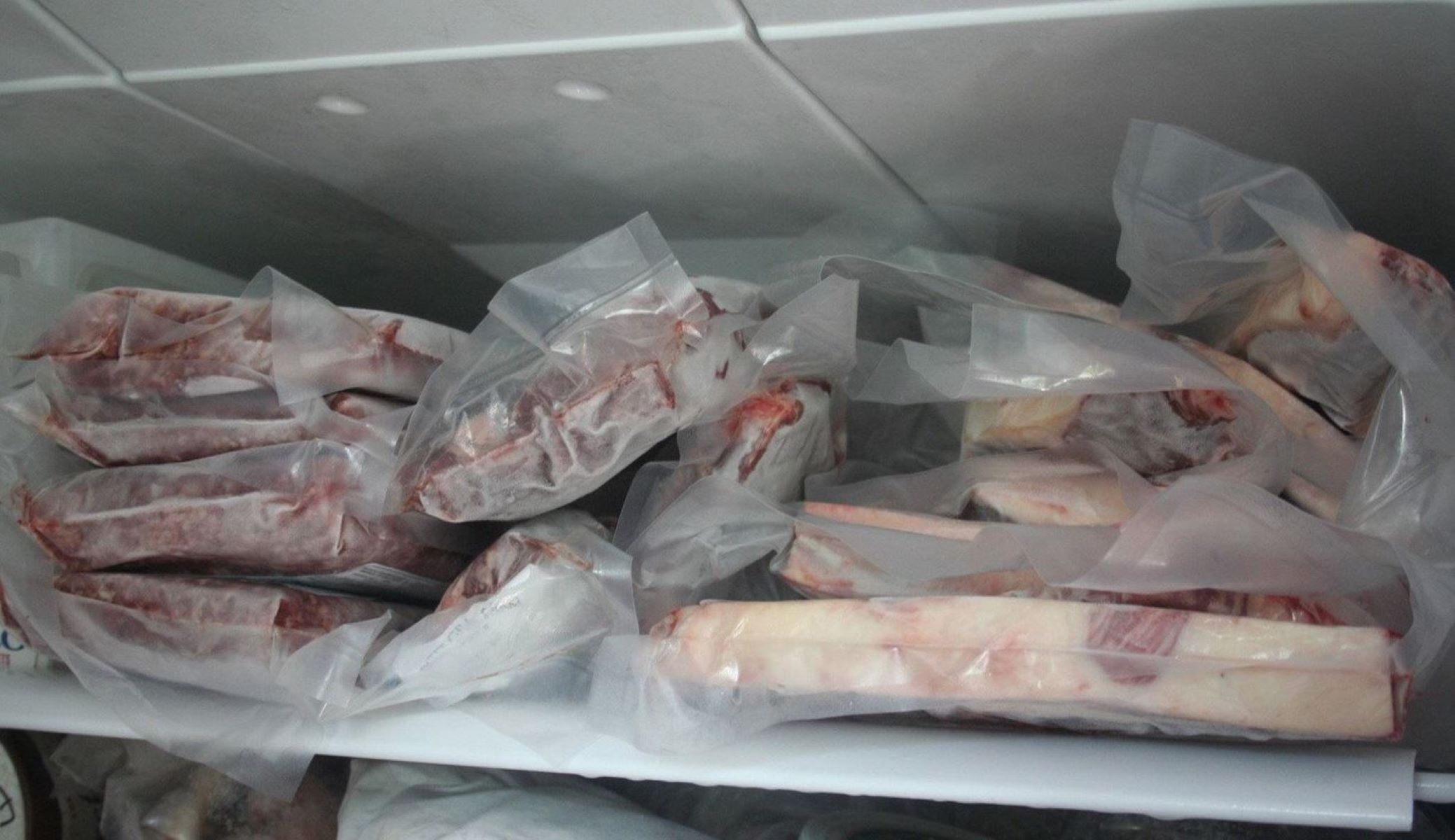
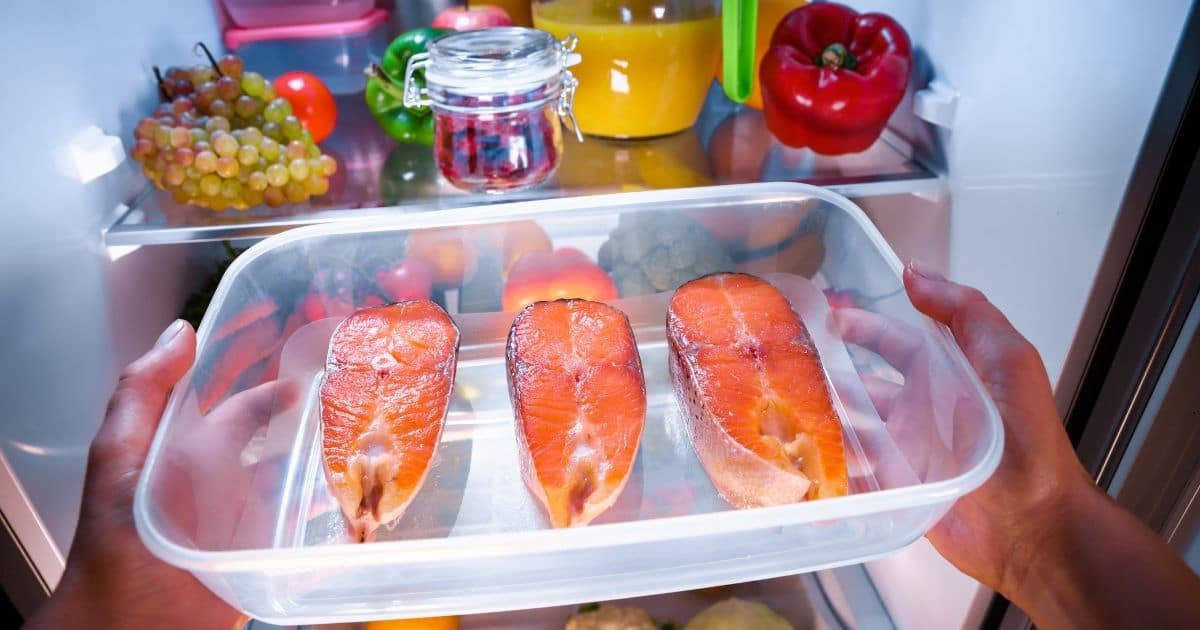
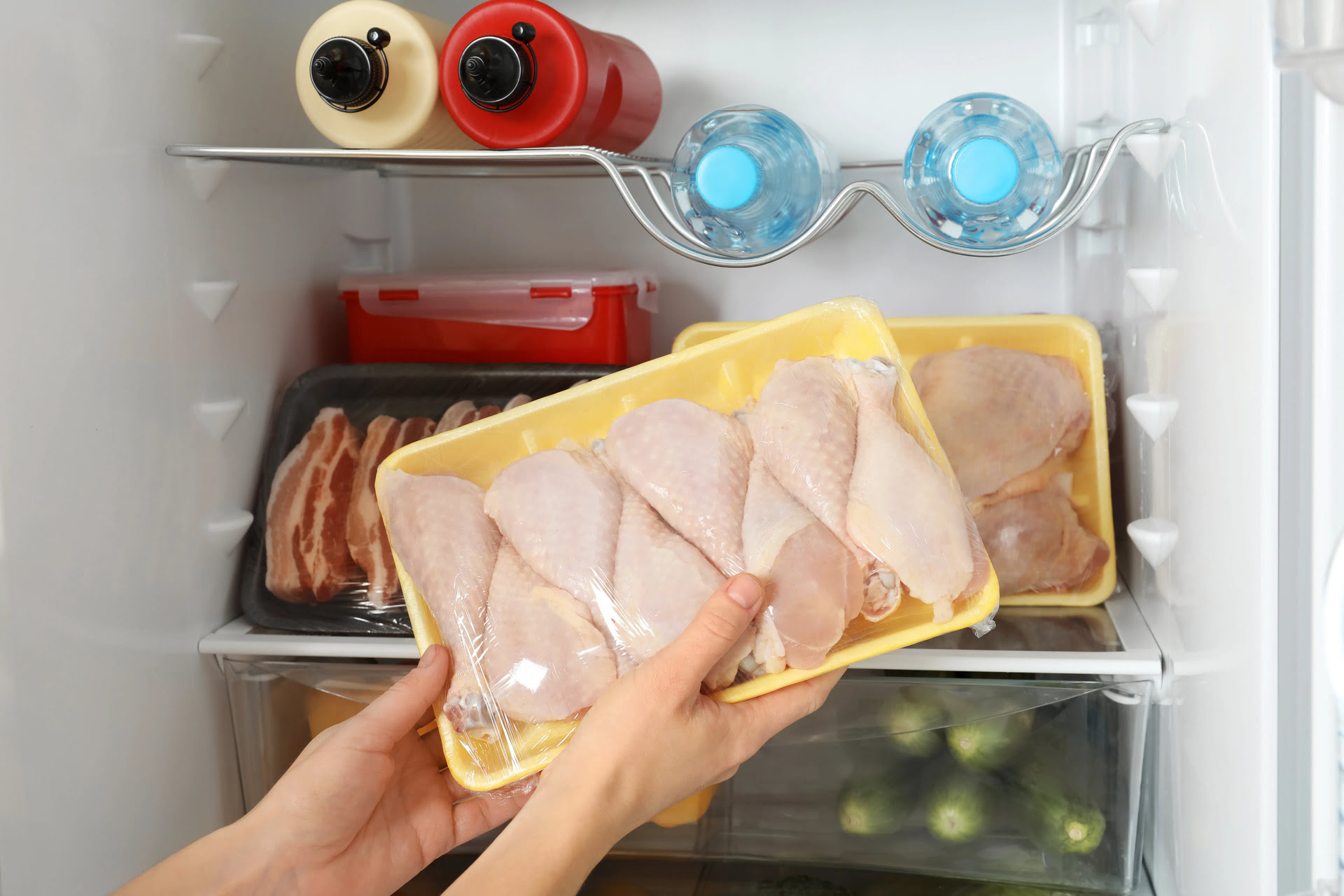
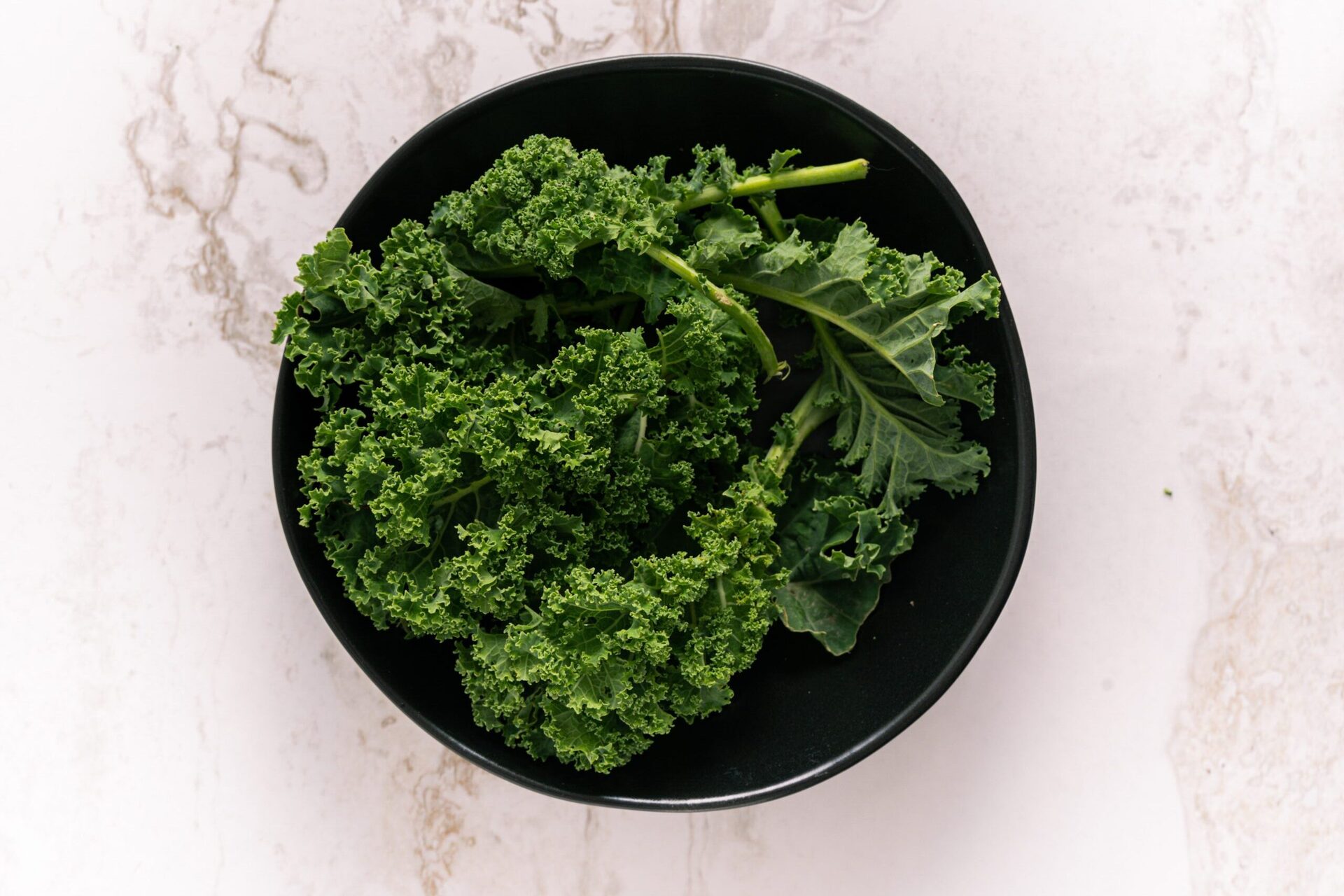
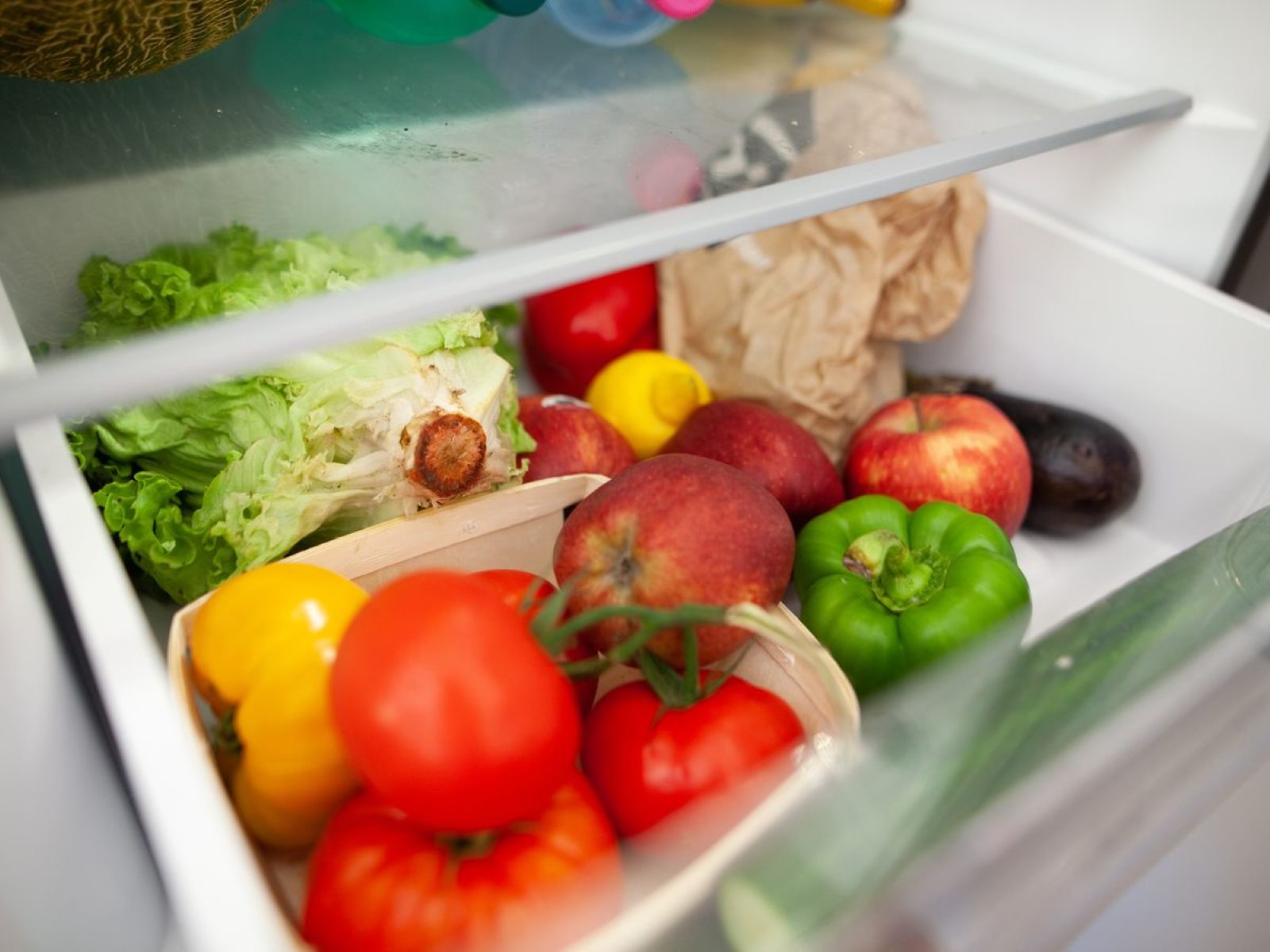
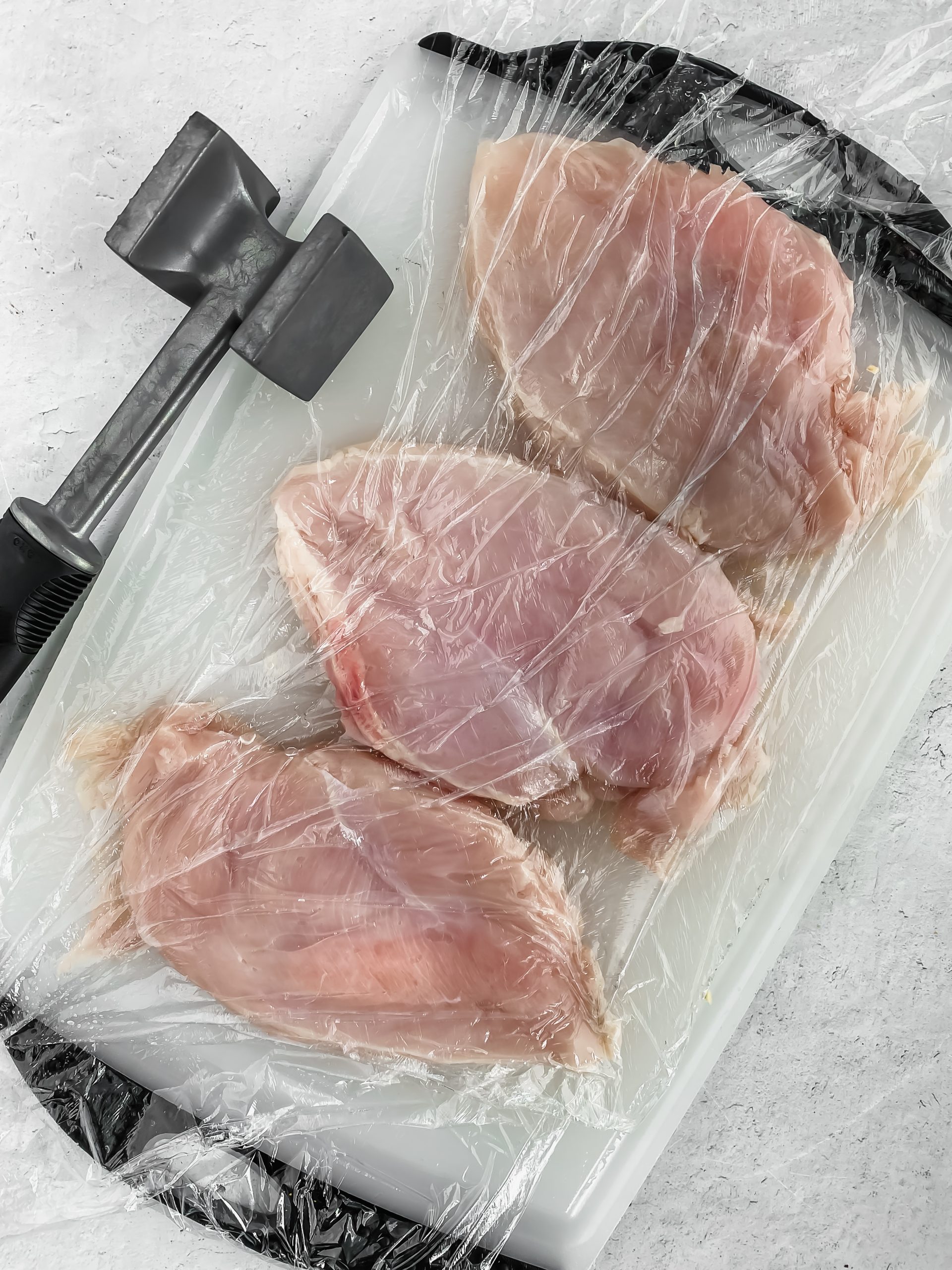
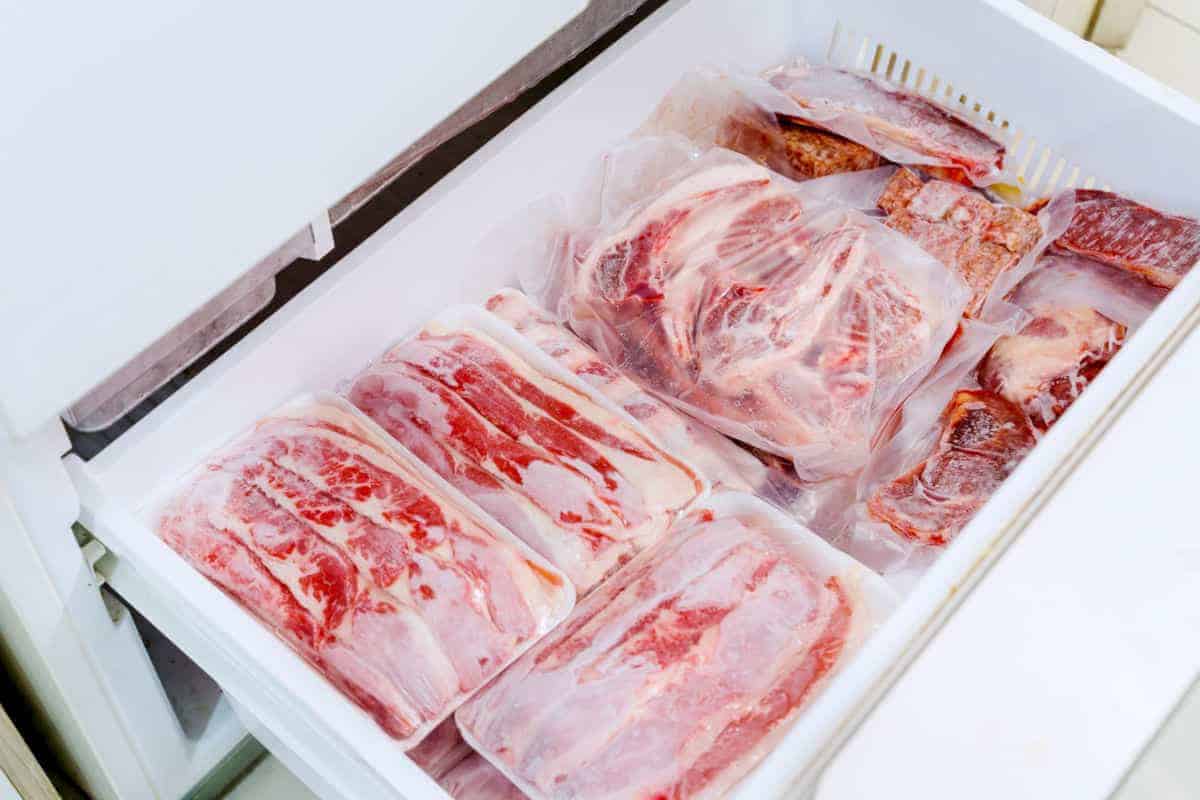

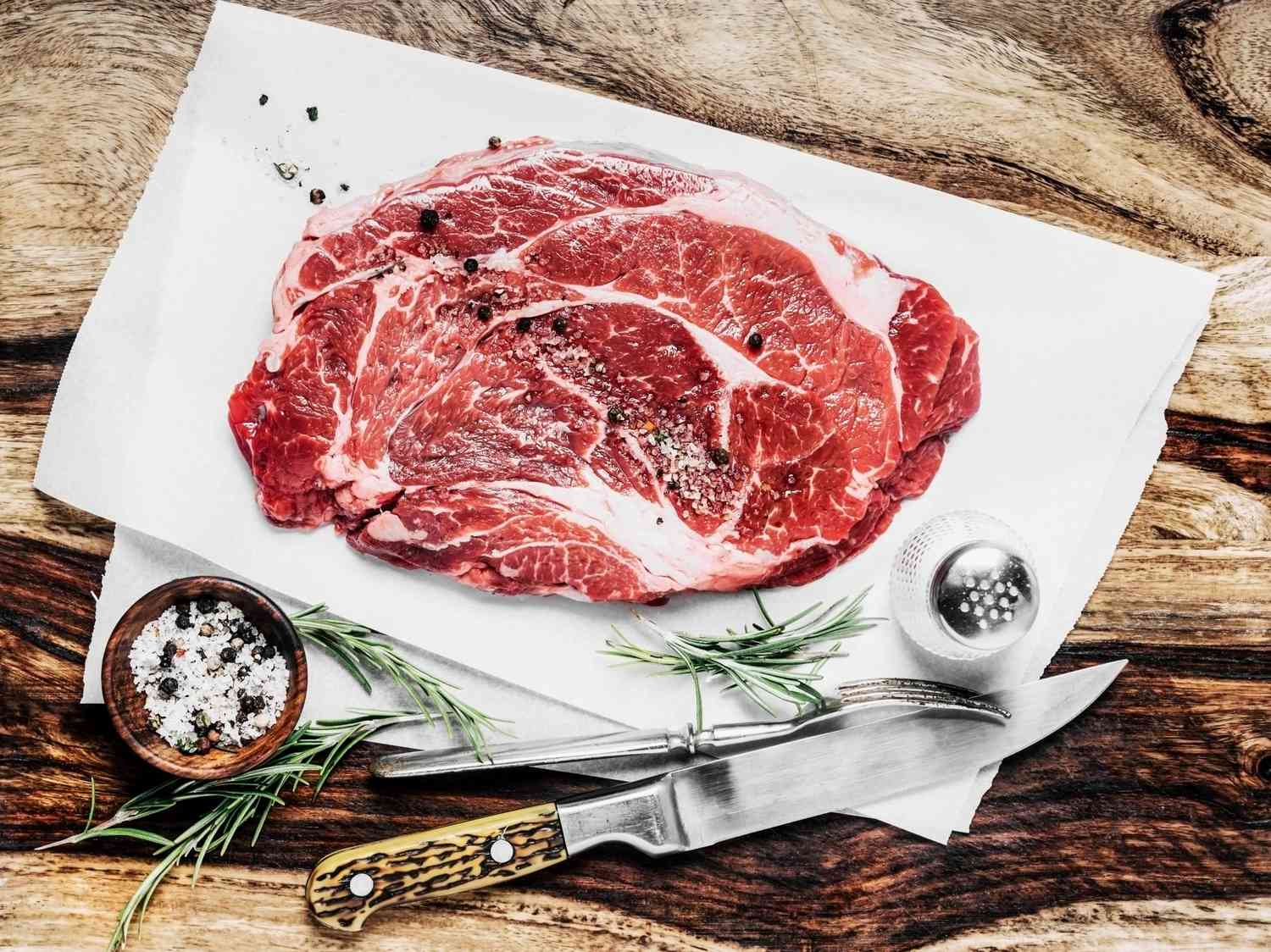

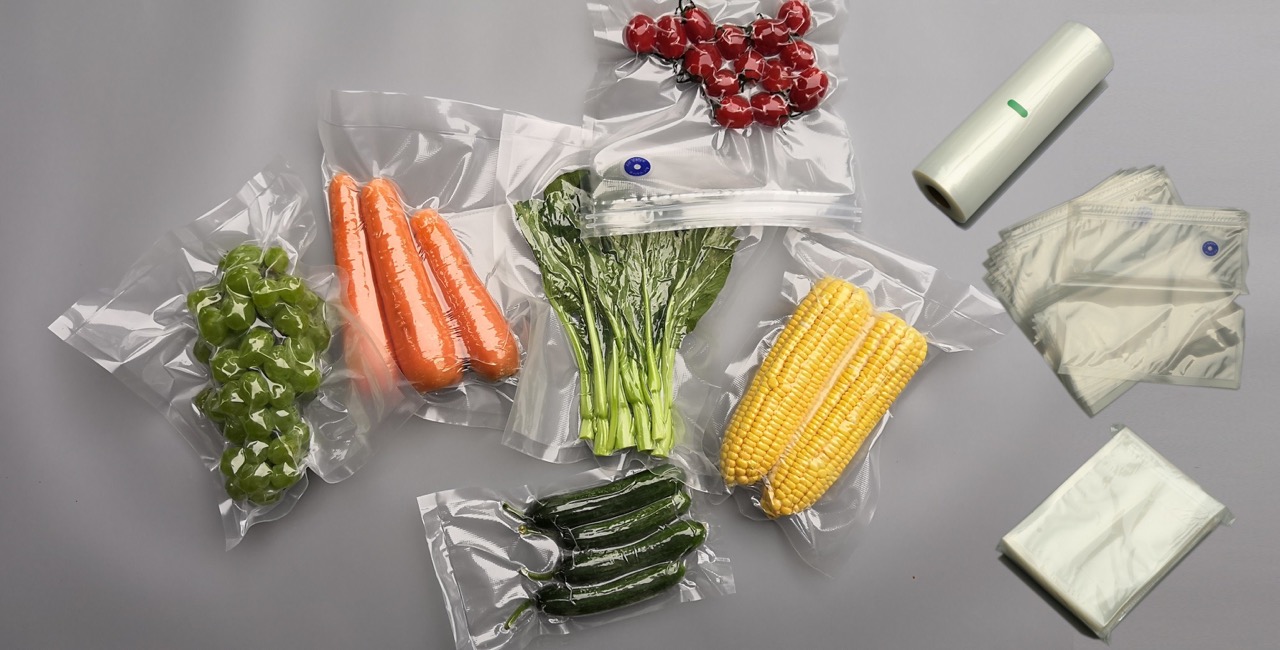

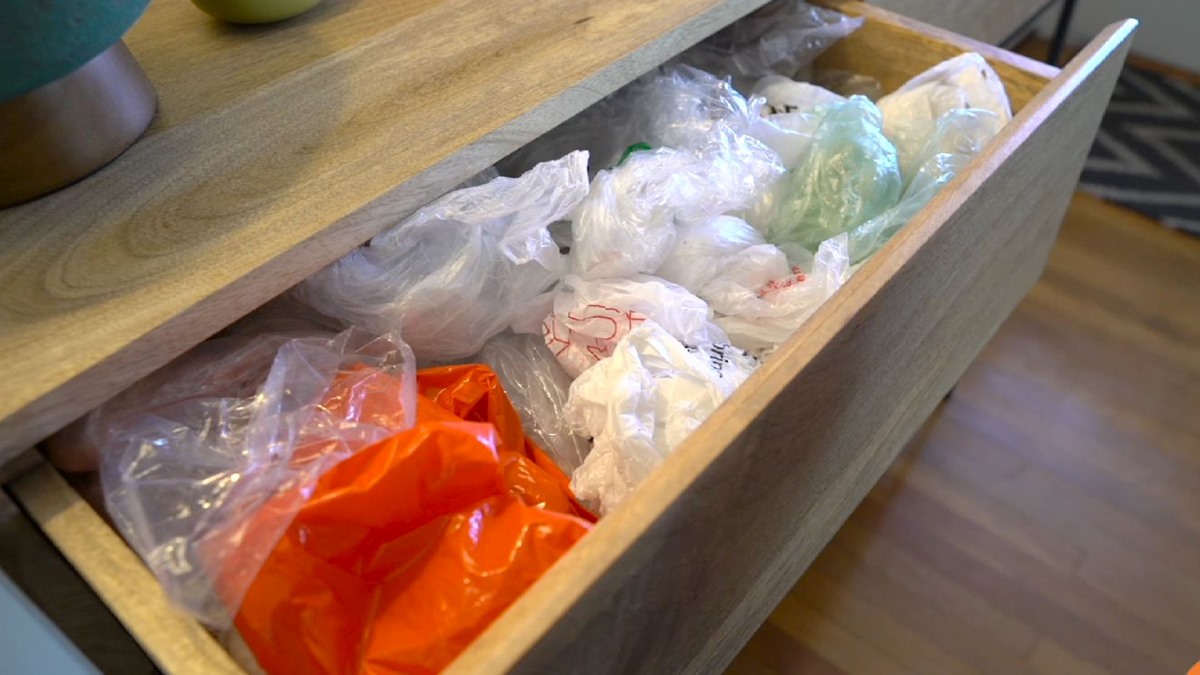

0 thoughts on “How To Store Meat In Freezer Without Plastic”